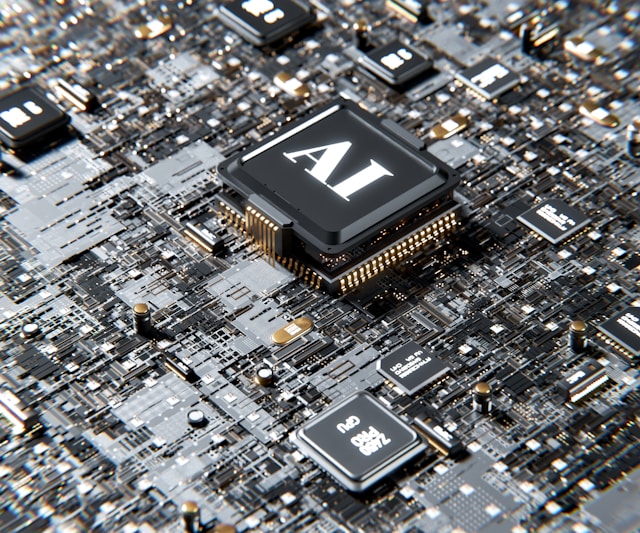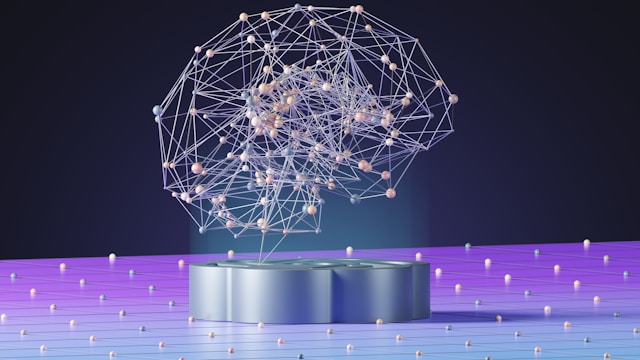AI Goes Picasso: Generative AI Paints a New World of Content

Artificial intelligence (AI) alters how we work, communicate, and solve issues. It has become a transformational force in many industries. AI impacts industries like healthcare, finance, and transportation, but it also has a compelling and disruptive impact on the arts. Generative AI is one of the most exciting uses of AI in the creative industries, changing the way we produce and value visual material. In this blog post, we'll go deeper into the field of generative AI and consider its potential effects on the production of art and content in the future.
The Fundamentals of AI Generative
Fundamentally, generative AI is a branch of machine learning that builds new information using examples and patterns in existing data. Unlike conventional AI systems, which carry out specified tasks according to pre-established rules, generative AI can produce unique and innovative results. Sophisticated neural networks—specifically, Generative Adversarial Networks (GANs) and Variational Autoencoders (VAEs)—are used to accomplish this. These networks learn from enormous datasets to provide imaginative and realistic results.
The foundation of generative AI is learning data representations and applying those representations to produce new material. For instance, a GAN comprises two neural networks that cooperate to create increasingly realistic images: a discriminator and a generator. The discriminator evaluates the validity of these newly generated images against samples from the real world, while the generator generates new images based on random noise. The generator gains proficiency in producing realistic and high-quality images using iterative training.
The Ascent of Artificial Intelligence Artists
As generative AI develops, machines are no longer just tools for artists; they are becoming artists in and of themselves. Artificial intelligence (AI)-generated artworks are becoming more well-known in the modern art scene. Works produced using algorithms are selling for large sums of money at auction and winning praise from critics. A famous illustration of this is the GAN algorithm-created "Portrait of Edmond de Belamy" by the Paris-based team Obvious. The fact that an AI-generated piece of art brought in over $400,000 at Christie's auction house shows how AI art is becoming increasingly popular in popular culture.
AI art is appealing because it defies conventional ideas about creativity and authorship. AI artists only use algorithms and data; culture, personal experiences, or ingrained prejudices do not influence them. This blurs the distinction between creator and creation and produces an intriguing juxtaposition between human inventiveness and computer intelligence.

Utilizing Generative AI in the Creation of Art and Content
There are several uses for generative AI in the arts and content creation, such as:
-
Artistic Style Transfer: Using generative AI, one artwork can be applied to another, producing original and eye-catching compositions. Artists are free to try various artistic philosophies and reimagine well-known works of art in fresh ways.
-
AI-Generated Soundscapes and Music: Generative AI is not limited to creating visual art; it can also develop immersive soundscapes and compose music. AI-powered music composers can produce original songs or background music suited to particular environments and moods.
-
Text-to-Image Synthesis: Using generative artificial intelligence, text descriptions can be turned into realistic images. This technology's applications include content production for marketing and advertising, virtual prototyping, and graphic design.
-
Virtual reality (VR) and interactive art: AI-powered VR and interactive art immerse viewers in dynamic, immersive worlds. Generative AI makes real-time adaptation and responsiveness in virtual environments possible, boosting user interaction and engagement.
Philosophical as well as Ethical Aspects
Although generative AI has enormous potential for innovation and creativity, it poses significant moral and philosophical issues.
-
Authorship and Ownership: Who is the legal owner of artificial intelligence (AI)-generated art, and how should credit for AI algorithms and human creators be given?
-
Bias and Diversity: What steps can we take to minimize the biases in training datasets and guarantee diversity and inclusivity in AI-generated content?
-
Impact on Human Creativity: In a world where robots are artists in and of themselves, what place will artists have, and will artificial intelligence augment or replace human creativity?
These factors highlight the necessity of developing and implementing AI technology responsibly, emphasizing ethics, justice, and openness.
Accepting AI as a Creative Tool
The development of generative AI offers artists, inventors, and innovators an exciting chance to explore new creative horizons, notwithstanding the ethical concerns. AI has the potential to be a very innovative tool for artists, allowing them to work together, explore, and push the boundaries of their medium in previously unheard-of ways.
When we welcome AI as a collaborator in the creative process, we open the door to a world of limitless possibilities where creativity and AI come together to create entirely new material. AI's path in the art world is comparable to Picasso's disruptive and transformative influence in the early 20th century, as both artists challenged established norms, redefined boundaries, and inspired new generations of artists.
In summary, a new era of artistic expression and creativity is being ushered in by the democratization of AI and the emergence of generative AI artists. Acknowledging AI's ability to spur creativity as it develops and permeates our daily lives will open up countless doors for research and learning. Let's celebrate the union of art and technology as AI creates a vivid picture of the future.







0 Comments